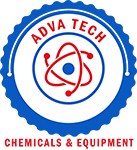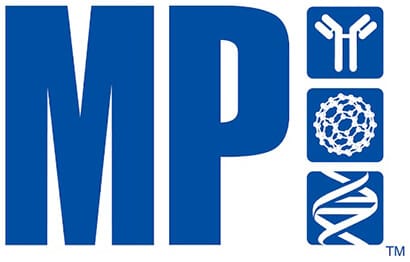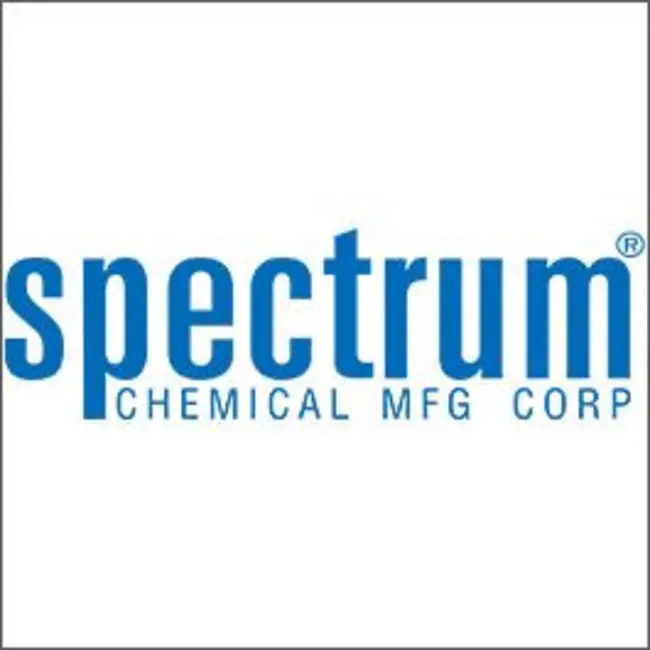GenScript Biotech
Showing 1251–1300 of 2554 results
-
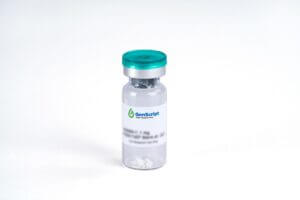
IFN-γ, Mouse
$414.00 Add to cart View Product DetailsSharing 41% sequence identity with human Interferon gamma (hIFN–γ), mouse IFN gamma (mIFN–γ)is a macrophage-activating factor.The active form of IFN–γ is an antiparallel dimer that sets off IFN–γ/JAK/STAT pathway. IFN–γ signaling does diverse biological functions primarily related to host defense and immune regulation, including antiviral and antibacterial defense, apoptosis, inflammation, and innate and acquired immunity.While IFN–γ–induced inflammatory cascade summons a variety of immune-related cell types, such as macrophages, natural killer (NK) cells and cytotoxic T lymphocytes (CTLs), IFN–γ is also implicated in resistance to NK cell and CTL responses and in immune escape in avariety of cancers.
-
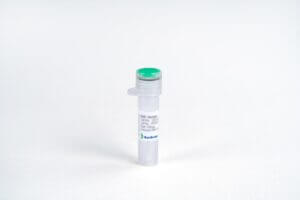
IFN-γ, Mouse
$86.25 Add to cart View Product DetailsSharing 41% sequence identity with human Interferon gamma (hIFN–γ), mouse IFN gamma (mIFN–γ)is a macrophage-activating factor.The active form of IFN–γ is an antiparallel dimer that sets off IFN–γ/JAK/STAT pathway. IFN–γ signaling does diverse biological functions primarily related to host defense and immune regulation, including antiviral and antibacterial defense, apoptosis, inflammation, and innate and acquired immunity.While IFN–γ–induced inflammatory cascade summons a variety of immune-related cell types, such as macrophages, natural killer (NK) cells and cytotoxic T lymphocytes (CTLs), IFN–γ is also implicated in resistance to NK cell and CTL responses and in immune escape in avariety of cancers.
-

IFN-γ, Mouse
$43.13 Add to cart View Product DetailsSharing 41% sequence identity with human Interferon gamma (hIFN–γ), mouse IFN gamma (mIFN–γ)is a macrophage-activating factor.The active form of IFN–γ is an antiparallel dimer that sets off IFN–γ/JAK/STAT pathway. IFN–γ signaling does diverse biological functions primarily related to host defense and immune regulation, including antiviral and antibacterial defense, apoptosis, inflammation, and innate and acquired immunity.While IFN–γ–induced inflammatory cascade summons a variety of immune-related cell types, such as macrophages, natural killer (NK) cells and cytotoxic T lymphocytes (CTLs), IFN–γ is also implicated in resistance to NK cell and CTL responses and in immune escape in avariety of cancers.
-

IFN-γ, Mouse
$280.31 Add to cart View Product DetailsSharing 41% sequence identity with human Interferon gamma (hIFN–γ), mouse IFN gamma (mIFN–γ)is a macrophage-activating factor.The active form of IFN–γ is an antiparallel dimer that sets off IFN–γ/JAK/STAT pathway. IFN–γ signaling does diverse biological functions primarily related to host defense and immune regulation, including antiviral and antibacterial defense, apoptosis, inflammation, and innate and acquired immunity.While IFN–γ–induced inflammatory cascade summons a variety of immune-related cell types, such as macrophages, natural killer (NK) cells and cytotoxic T lymphocytes (CTLs), IFN–γ is also implicated in resistance to NK cell and CTL responses and in immune escape in avariety of cancers.
-
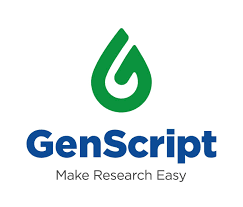
IFN-γ, Rat
$836.63 Add to cart View Product DetailsInterferon-gamma (IFN-γ), also known as Type II interferon or immune interferon, is a cytokine produced primarily by T-lymphocytes and natural killer cells. The protein shares no significant homology with IFN-β or the various IFN-α family proteins. Mature IFN-γ exists as noncovalently-linked homodimers. It shares high sequence indentity with mouse IFN-γ (86 %). IFN-γ was originally characterized based on its antiviral activities. The protein also exerts antiproliferative, immunoregulatory and proinflammatory activities and is thus important in host defense mechanisms. IFN-γ induces the production of cytokines, upregulates the expression of class I and II MHC antigens, Fc receptor and leukocyte adhesion molecules. It modulates macrophage effector functions, influences isotype switching and potentiates the secretion of immunoglobulins by B cells. Additionally, IFN-γ augments TH1 cell expansion and may be required for TH1 cell differentiation.
-

IFN-γ, Rat
$163.88 Add to cart View Product DetailsInterferon-gamma (IFN-γ), also known as Type II interferon or immune interferon, is a cytokine produced primarily by T-lymphocytes and natural killer cells. The protein shares no significant homology with IFN-β or the various IFN-α family proteins. Mature IFN-γ exists as noncovalently-linked homodimers. It shares high sequence indentity with mouse IFN-γ (86 %). IFN-γ was originally characterized based on its antiviral activities. The protein also exerts antiproliferative, immunoregulatory and proinflammatory activities and is thus important in host defense mechanisms. IFN-γ induces the production of cytokines, upregulates the expression of class I and II MHC antigens, Fc receptor and leukocyte adhesion molecules. It modulates macrophage effector functions, influences isotype switching and potentiates the secretion of immunoglobulins by B cells. Additionally, IFN-γ augments TH1 cell expansion and may be required for TH1 cell differentiation.
-

IFN-γ, Rat (CHO-expressed)
$521.81 Add to cart View Product DetailsInterferon-γ (IFN-γ), also known as Type II interferon or immune interferon, is a cytokine produced primarily by T-lymphocytes and natural killer cells. The active form of IFN-γ is an antiparallel dimer that interacts with the receptor IFN-γR1 and sets off IFN-γ/JAK/STAT pathway. IFN-γ signaling does diverse biological functions primarily related to host defense and immune regulation, including antiviral and antibacterial defense, apoptosis, inflammation, and innate and acquired immunity. While IFN-γ–induced inflammatory cascade summons a variety of immune-related cell types, such as macrophages, natural killer (NK) cells and cytotoxic T lymphocytes (CTLs), IFN-γ is also implicated in resistance to NK cell and CTL responses and in immune escape in a variety of cancers.
-

IFN-γ, Rat (CHO-expressed)
$36.23 Add to cart View Product DetailsInterferon-γ (IFN-γ), also known as Type II interferon or immune interferon, is a cytokine produced primarily by T-lymphocytes and natural killer cells. The active form of IFN-γ is an antiparallel dimer that interacts with the receptor IFN-γR1 and sets off IFN-γ/JAK/STAT pathway. IFN-γ signaling does diverse biological functions primarily related to host defense and immune regulation, including antiviral and antibacterial defense, apoptosis, inflammation, and innate and acquired immunity. While IFN-γ–induced inflammatory cascade summons a variety of immune-related cell types, such as macrophages, natural killer (NK) cells and cytotoxic T lymphocytes (CTLs), IFN-γ is also implicated in resistance to NK cell and CTL responses and in immune escape in a variety of cancers.
-

IFN-γ, Rat (CHO-expressed)
$76.76 Add to cart View Product DetailsInterferon-γ (IFN-γ), also known as Type II interferon or immune interferon, is a cytokine produced primarily by T-lymphocytes and natural killer cells. The active form of IFN-γ is an antiparallel dimer that interacts with the receptor IFN-γR1 and sets off IFN-γ/JAK/STAT pathway. IFN-γ signaling does diverse biological functions primarily related to host defense and immune regulation, including antiviral and antibacterial defense, apoptosis, inflammation, and innate and acquired immunity. While IFN-γ–induced inflammatory cascade summons a variety of immune-related cell types, such as macrophages, natural killer (NK) cells and cytotoxic T lymphocytes (CTLs), IFN-γ is also implicated in resistance to NK cell and CTL responses and in immune escape in a variety of cancers.
-

IFN-λ1, Human
$2,018.25 Add to cart View Product DetailsIL-28A, IL-28B, and IL-29, also named interferon-λ2 (IFN-λ2), IFN-λ3, and IFN-λ1, respectively, are newly identified class II cytokine receptor ligands that are distantly related to members of the IL-10 family (11-13% aa sequence identity) and the type I IFN family (15-19% aa sequence identity). The expression of IL-28A, B, and IL-29 is induced by virus infection or double-stranded RNA. All three cytokines exert bioactivities that overlap those of type I IFNs, including antiviral activity and up-regulation of MHC class I antigen expression. The three proteins signal through the same heterodimeric receptor complex that is composed of the IL-10 receptor β (IL-10 Rβ) and a novel IL-28 receptor α (IL-28 Rα, also known as IFN-λR1). Ligand binding to the receptor complex induces Jak kinase activation and STAT1 and STAT2 tyrosine phosphorylation.
-

IFN-λ1, Human
$155.25 Add to cart View Product DetailsIL-28A, IL-28B, and IL-29, also named interferon-λ2 (IFN-λ2), IFN-λ3, and IFN-λ1, respectively, are newly identified class II cytokine receptor ligands that are distantly related to members of the IL-10 family (11-13% aa sequence identity) and the type I IFN family (15-19% aa sequence identity). The expression of IL-28A, B, and IL-29 is induced by virus infection or double-stranded RNA. All three cytokines exert bioactivities that overlap those of type I IFNs, including antiviral activity and up-regulation of MHC class I antigen expression. The three proteins signal through the same heterodimeric receptor complex that is composed of the IL-10 receptor β (IL-10 Rβ) and a novel IL-28 receptor α (IL-28 Rα, also known as IFN-λR1). Ligand binding to the receptor complex induces Jak kinase activation and STAT1 and STAT2 tyrosine phosphorylation.
-

IFN-ω, Human
$68.14 Add to cart View Product DetailsInterferon-Omega (IFN-ω) coded by IFNW1 gene in human, is a number of the type I interferon family, which includes IFN-a, IFN-β, and IFN-ω. The IFNAR-1/IFNAR-2 receptor complex can help with the signal transduction, followed the antiviral or the antiproliferative actions. IFN-ω is derived from IFN-a/β and share 75% sequence with IFN-a. It has two intramolecular disulfide bonds which are crucial for activities. Mire-Sluis et al have described bioassays for IFN-α, IFN-β, and IFN-ω that exploit the ability of these factors to inhibit proliferation of TF-1 cells induced by GM-CSF. The bioassays can be used also with Epo and TF-1 cells, or Epo and Epo-transfected UT-7 cells.
-

IGF-BP-2, His, Human
$1,863.00 Add to cart View Product DetailsIGF-BP-2, also known as Insulin-like growth factor-binding protein 2, IBP-2 and BP-2, is a cysteine-rich secreted protein belonging to the IGF-binding protein superfamily. It is expressed by the central nervous system, bone cells and reproductive tissues. IGF-BP-2 binds to both IGF-I and IGF-II, with a much higher binding affinity to IGF-II than IGF-I. IGF-BP-2 has been shown to inhibitand stimulate the growth promoting effects of IGFs, thus serving as a regulator for IGF distribution, function and activity.
-

IGF-BP-2, His, Human
$51.75 Add to cart View Product DetailsIGF-BP-2, also known as Insulin-like growth factor-binding protein 2, IBP-2 and BP-2, is a cysteine-rich secreted protein belonging to the IGF-binding protein superfamily. It is expressed by the central nervous system, bone cells and reproductive tissues. IGF-BP-2 binds to both IGF-I and IGF-II, with a much higher binding affinity to IGF-II than IGF-I. IGF-BP-2 has been shown to inhibitand stimulate the growth promoting effects of IGFs, thus serving as a regulator for IGF distribution, function and activity.
-

IGF-BP-2, His, Human
$224.25 Add to cart View Product DetailsIGF-BP-2, also known as Insulin-like growth factor-binding protein 2, IBP-2 and BP-2, is a cysteine-rich secreted protein belonging to the IGF-binding protein superfamily. It is expressed by the central nervous system, bone cells and reproductive tissues. IGF-BP-2 binds to both IGF-I and IGF-II, with a much higher binding affinity to IGF-II than IGF-I. IGF-BP-2 has been shown to inhibitand stimulate the growth promoting effects of IGFs, thus serving as a regulator for IGF distribution, function and activity.
-

IGF-BP-3, Human
$2,018.25 Add to cart View Product DetailsIGF-BP3 is a 30 kDa cysteine-rich secreted protein. It is the major IGF binding protein present in the plasma of human and animals and it is also found in α-granules of platelets. In addition to its ability to modulate the activity of IGF-I and IGF-II, IGF-BP3 exerts inhibitory effects on follicle stimulating hormone (FSH) activity. Decreased plasma levels of IGF-BP3 often results in dwarfism, whereas elevated levels of IGF-BP3 may lead to acromegaly. The expression of IGF-BP3 in fibroblasts is stimulated by mitogenic growth factors such as Bombesin, Vasopressin, PDGF, and EGF.
-

IGF-BP-3, Human
$155.25 Add to cart View Product DetailsIGF-BP3 is a 30 kDa cysteine-rich secreted protein. It is the major IGF binding protein present in the plasma of human and animals and it is also found in α-granules of platelets. In addition to its ability to modulate the activity of IGF-I and IGF-II, IGF-BP3 exerts inhibitory effects on follicle stimulating hormone (FSH) activity. Decreased plasma levels of IGF-BP3 often results in dwarfism, whereas elevated levels of IGF-BP3 may lead to acromegaly. The expression of IGF-BP3 in fibroblasts is stimulated by mitogenic growth factors such as Bombesin, Vasopressin, PDGF, and EGF.
-

IGF-BP-4, His, Human
$1,863.00 Add to cart View Product DetailsInsulin-like growth factor-binding protein 4 (IGF-BP-4), also known as IBP-4, is a secreted glycoprotein belonging to the IGFBP family. IGF-BP-4 is produced by osteoblasts, epidermis, ovarian follicles and other tissues. It binds both insulin-like growth factor (IGF) I and II, and it circulates in the plasma in both glycosylated and non-glycosylated forms. IGF-BP-4 prolongs the half-life of the IGFs and has been shown to inhibit or stimulate the growth-promoting effects of the IGFs. Pregnancy Associated Plasma Protein A (PAPP-A) proteolytically cleaves IGF-BP-4 and reduces its affinity to bind IGFs, and thus serves as an important regulator of IGF-BP-4 function.
-

IGF-BP-4, His, Human
$51.75 Add to cart View Product DetailsInsulin-like growth factor-binding protein 4 (IGF-BP-4), also known as IBP-4, is a secreted glycoprotein belonging to the IGFBP family. IGF-BP-4 is produced by osteoblasts, epidermis, ovarian follicles and other tissues. It binds both insulin-like growth factor (IGF) I and II, and it circulates in the plasma in both glycosylated and non-glycosylated forms. IGF-BP-4 prolongs the half-life of the IGFs and has been shown to inhibit or stimulate the growth-promoting effects of the IGFs. Pregnancy Associated Plasma Protein A (PAPP-A) proteolytically cleaves IGF-BP-4 and reduces its affinity to bind IGFs, and thus serves as an important regulator of IGF-BP-4 function.
-

IGF-BP-4, His, Human
$224.25 Add to cart View Product DetailsInsulin-like growth factor-binding protein 4 (IGF-BP-4), also known as IBP-4, is a secreted glycoprotein belonging to the IGFBP family. IGF-BP-4 is produced by osteoblasts, epidermis, ovarian follicles and other tissues. It binds both insulin-like growth factor (IGF) I and II, and it circulates in the plasma in both glycosylated and non-glycosylated forms. IGF-BP-4 prolongs the half-life of the IGFs and has been shown to inhibit or stimulate the growth-promoting effects of the IGFs. Pregnancy Associated Plasma Protein A (PAPP-A) proteolytically cleaves IGF-BP-4 and reduces its affinity to bind IGFs, and thus serves as an important regulator of IGF-BP-4 function.
-

IGF-I, Bovine
$120.75 Add to cart View Product DetailsInsulin-like growth factor 1 (IGF-1), also called Somatomedin, is a hormone similar in molecular structure to insulin but has a much higher growth-promoting activity. IGF-1 consists of 70 amino acids in a single chain with three intramolecular disulfide bridges. IGF-1 may be a physiological regulator of [1-14C]-2-deoxy-D-glucose (2DG) transport and glycogen synthesis in osteoblasts. It is able to stimulate glucose transport in bone-derived osteoblastic (PyMS) cells and is effective at much lower concentrations than insulin, not only regarding glycogen and DNA synthesis but also with regard to enhancing glucose uptake. It may also play a role in synapse maturation.
-

IGF-I, Bovine
$43.13 Add to cart View Product DetailsInsulin-like growth factor 1 (IGF-1), also called Somatomedin, is a hormone similar in molecular structure to insulin but has a much higher growth-promoting activity. IGF-1 consists of 70 amino acids in a single chain with three intramolecular disulfide bridges. IGF-1 may be a physiological regulator of [1-14C]-2-deoxy-D-glucose (2DG) transport and glycogen synthesis in osteoblasts. It is able to stimulate glucose transport in bone-derived osteoblastic (PyMS) cells and is effective at much lower concentrations than insulin, not only regarding glycogen and DNA synthesis but also with regard to enhancing glucose uptake. It may also play a role in synapse maturation.
-

IGF-I, Bovine
$76.76 Add to cart View Product DetailsInsulin-like growth factor 1 (IGF-1), also called Somatomedin, is a hormone similar in molecular structure to insulin but has a much higher growth-promoting activity. IGF-1 consists of 70 amino acids in a single chain with three intramolecular disulfide bridges. IGF-1 may be a physiological regulator of [1-14C]-2-deoxy-D-glucose (2DG) transport and glycogen synthesis in osteoblasts. It is able to stimulate glucose transport in bone-derived osteoblastic (PyMS) cells and is effective at much lower concentrations than insulin, not only regarding glycogen and DNA synthesis but also with regard to enhancing glucose uptake. It may also play a role in synapse maturation.
-
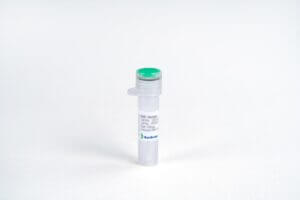
IGF-I, Human
$120.75 Add to cart View Product DetailsInsulin-like growth factor I (IGF-I) also known as Somatamedin C is a hormone similar in molecular structure to insulin. Human IGF-I has two isoforms (IGF-IA and IGF-IB) which are differentially expressed by various tissues. Mature human IGF-I shares 94% and 96% aa sequence identity with mouse and rat IGF-I, respectively. Both IGF-I and IGF-II (another ligand of IGF) can signal through the IGF-I receptor (IGFIR), but only IGF-II can bind the IGF-II receptor (IGFIIR/ Mannose-6-phosphate receptor). IGF-I plays an important role in childhood growth and continues to have anabolic effects in adults.
-

IGF-I, Human
$43.13 Add to cart View Product DetailsInsulin-like growth factor I (IGF-I) also known as Somatamedin C is a hormone similar in molecular structure to insulin. Human IGF-I has two isoforms (IGF-IA and IGF-IB) which are differentially expressed by various tissues. Mature human IGF-I shares 94% and 96% aa sequence identity with mouse and rat IGF-I, respectively. Both IGF-I and IGF-II (another ligand of IGF) can signal through the IGF-I receptor (IGFIR), but only IGF-II can bind the IGF-II receptor (IGFIIR/ Mannose-6-phosphate receptor). IGF-I plays an important role in childhood growth and continues to have anabolic effects in adults.
-

IGF-I, Human
$76.76 Add to cart View Product DetailsInsulin-like growth factor I (IGF-I) also known as Somatamedin C is a hormone similar in molecular structure to insulin. Human IGF-I has two isoforms (IGF-IA and IGF-IB) which are differentially expressed by various tissues. Mature human IGF-I shares 94% and 96% aa sequence identity with mouse and rat IGF-I, respectively. Both IGF-I and IGF-II (another ligand of IGF) can signal through the IGF-I receptor (IGFIR), but only IGF-II can bind the IGF-II receptor (IGFIIR/ Mannose-6-phosphate receptor). IGF-I plays an important role in childhood growth and continues to have anabolic effects in adults.
-

IGF-I, Mouse
$612.38 Add to cart View Product DetailsInsulin-like Growth Factor I (IGF-I) is a single chain 7 kDa growth-promoting polypeptide originally identified as somatomedin-c. It belongs to the IGF family of peptides, which also includes IGF-II and insulin. The gene expression of IGF-I is mainly regulated by Growth Hormone, and IGF-I executes its functions via signaling through transmembrane tyrosine receptors (IGF Receptors). Most circulating IFG-I is associated with the IGF Binding Protein 3 (IGFBP-3), and the IGFBPs may inhibit the actions of IGFs by competing against the IGF Receptors. IGF-I is active in post-natal and adult animals, and is crucial for somatic growth, as IGF-I null mice show marked retardation in utero. IGF-I is involved in carcinogenesis, and related to prostate cancer as well.
-

IGF-I, Mouse
$43.13 Add to cart View Product DetailsInsulin-like Growth Factor I (IGF-I) is a single chain 7 kDa growth-promoting polypeptide originally identified as somatomedin-c. It belongs to the IGF family of peptides, which also includes IGF-II and insulin. The gene expression of IGF-I is mainly regulated by Growth Hormone, and IGF-I executes its functions via signaling through transmembrane tyrosine receptors (IGF Receptors). Most circulating IFG-I is associated with the IGF Binding Protein 3 (IGFBP-3), and the IGFBPs may inhibit the actions of IGFs by competing against the IGF Receptors. IGF-I is active in post-natal and adult animals, and is crucial for somatic growth, as IGF-I null mice show marked retardation in utero. IGF-I is involved in carcinogenesis, and related to prostate cancer as well.
-

IGF-I, Mouse
$86.25 Add to cart View Product DetailsInsulin-like Growth Factor I (IGF-I) is a single chain 7 kDa growth-promoting polypeptide originally identified as somatomedin-c. It belongs to the IGF family of peptides, which also includes IGF-II and insulin. The gene expression of IGF-I is mainly regulated by Growth Hormone, and IGF-I executes its functions via signaling through transmembrane tyrosine receptors (IGF Receptors). Most circulating IFG-I is associated with the IGF Binding Protein 3 (IGFBP-3), and the IGFBPs may inhibit the actions of IGFs by competing against the IGF Receptors. IGF-I is active in post-natal and adult animals, and is crucial for somatic growth, as IGF-I null mice show marked retardation in utero. IGF-I is involved in carcinogenesis, and related to prostate cancer as well.
-

IGF-I, Rat
$612.38 Add to cart View Product DetailsInsulin-like Growth Factor I (IGF-I) is a single chain 7 kDa growth-promoting polypeptide originally identified as somatomedin-c. It belongs to the IGF family of peptides, which also includes IGF-II and insulin. The gene expression of IGF-I is mainly regulated by Growth Hormone, and IGF-I executes its functions via signaling through transmembrane tyrosine receptors (IGF Receptors). Most circulating IFG-I is associated with the IGF Binding Protein 3 (IGFBP-3), and the IGFBPs may inhibit the actions of IGFs by competing against the IGF Receptors. IGF-I is active in post-natal and adult animals, and is crucial for somatic growth, as IGF-I null mice show marked retardation in utero. IGF-I is involved in the carcinogenesis, and related to the prostate cancer as well.
-

IGF-I, Rat
$36.23 Add to cart View Product DetailsInsulin-like Growth Factor I (IGF-I) is a single chain 7 kDa growth-promoting polypeptide originally identified as somatomedin-c. It belongs to the IGF family of peptides, which also includes IGF-II and insulin. The gene expression of IGF-I is mainly regulated by Growth Hormone, and IGF-I executes its functions via signaling through transmembrane tyrosine receptors (IGF Receptors). Most circulating IFG-I is associated with the IGF Binding Protein 3 (IGFBP-3), and the IGFBPs may inhibit the actions of IGFs by competing against the IGF Receptors. IGF-I is active in post-natal and adult animals, and is crucial for somatic growth, as IGF-I null mice show marked retardation in utero. IGF-I is involved in the carcinogenesis, and related to the prostate cancer as well.
-

IGF-I, Rat
$76.76 Add to cart View Product DetailsInsulin-like Growth Factor I (IGF-I) is a single chain 7 kDa growth-promoting polypeptide originally identified as somatomedin-c. It belongs to the IGF family of peptides, which also includes IGF-II and insulin. The gene expression of IGF-I is mainly regulated by Growth Hormone, and IGF-I executes its functions via signaling through transmembrane tyrosine receptors (IGF Receptors). Most circulating IFG-I is associated with the IGF Binding Protein 3 (IGFBP-3), and the IGFBPs may inhibit the actions of IGFs by competing against the IGF Receptors. IGF-I is active in post-natal and adult animals, and is crucial for somatic growth, as IGF-I null mice show marked retardation in utero. IGF-I is involved in the carcinogenesis, and related to the prostate cancer as well.
-

IGF-I, Salmon
$1,138.50 Add to cart View Product DetailsInsulin-like growth factor 1 (IGF-1), also called Somatomedin, is a hormone similar in molecular structure to insulin but has a much higher growth-promoting activity. IGF-1 consists of 70 amino acids in a single chain with three intramolecular disulfide bridges. IGF-1 may be a physiological regulator of [1-14C]-2-deoxy-D-glucose (5DG) transport and glycogen synthesis in osteoblasts. It is able to stimulate glucose transport in bone-derived osteoblastic (PyMS) cells and is effective at much lower concentrations than insulin, not only regarding glycogen and DNA synthesis but also with regard to enhancing glucose uptake. It may also play a role in synapse maturation.
-

IGF-I, Salmon
$63.83 Add to cart View Product DetailsInsulin-like growth factor 1 (IGF-1), also called Somatomedin, is a hormone similar in molecular structure to insulin but has a much higher growth-promoting activity. IGF-1 consists of 70 amino acids in a single chain with three intramolecular disulfide bridges. IGF-1 may be a physiological regulator of [1-14C]-2-deoxy-D-glucose (5DG) transport and glycogen synthesis in osteoblasts. It is able to stimulate glucose transport in bone-derived osteoblastic (PyMS) cells and is effective at much lower concentrations than insulin, not only regarding glycogen and DNA synthesis but also with regard to enhancing glucose uptake. It may also play a role in synapse maturation.
-

IGF-I, Salmon
$232.88 Add to cart View Product DetailsInsulin-like growth factor 1 (IGF-1), also called Somatomedin, is a hormone similar in molecular structure to insulin but has a much higher growth-promoting activity. IGF-1 consists of 70 amino acids in a single chain with three intramolecular disulfide bridges. IGF-1 may be a physiological regulator of [1-14C]-2-deoxy-D-glucose (5DG) transport and glycogen synthesis in osteoblasts. It is able to stimulate glucose transport in bone-derived osteoblastic (PyMS) cells and is effective at much lower concentrations than insulin, not only regarding glycogen and DNA synthesis but also with regard to enhancing glucose uptake. It may also play a role in synapse maturation.
-

IGF-II, Human
$560.63 Add to cart View Product DetailsInsulin-like Growth Factor II (IGF-II) is a single chain 7 kDa polypeptide, and shares a high degree of homology with insulin. During circulation in vivo, IGF-II is complexed to high affinity binding proteins, IGF Binding Proteins (IGFBP), which act as circulating reservoirs, transport IGF-II, and prolong the half life of IGF-II. The receptors of IGF-II (IGFRs) are transmembrane tyrosine receptors, and are heterotetrameric consisting of two α-subunits and two β-subunits. IGFRs execute their role via intracellullar signaling molecules, such as IRS, shc, and PI3K. The functions of IGF-II include promoting cell survival, growth, proliferation, differentiation and motility. In particular, IGF-II promotes proliferation, inhibits death, and stimulates transformation in breast cancer cells.
-

IGF-II, Human
$43.13 Add to cart View Product DetailsInsulin-like Growth Factor II (IGF-II) is a single chain 7 kDa polypeptide, and shares a high degree of homology with insulin. During circulation in vivo, IGF-II is complexed to high affinity binding proteins, IGF Binding Proteins (IGFBP), which act as circulating reservoirs, transport IGF-II, and prolong the half life of IGF-II. The receptors of IGF-II (IGFRs) are transmembrane tyrosine receptors, and are heterotetrameric consisting of two α-subunits and two β-subunits. IGFRs execute their role via intracellullar signaling molecules, such as IRS, shc, and PI3K. The functions of IGF-II include promoting cell survival, growth, proliferation, differentiation and motility. In particular, IGF-II promotes proliferation, inhibits death, and stimulates transformation in breast cancer cells.
-

IGF-II, Human
$86.25 Add to cart View Product DetailsInsulin-like Growth Factor II (IGF-II) is a single chain 7 kDa polypeptide, and shares a high degree of homology with insulin. During circulation in vivo, IGF-II is complexed to high affinity binding proteins, IGF Binding Proteins (IGFBP), which act as circulating reservoirs, transport IGF-II, and prolong the half life of IGF-II. The receptors of IGF-II (IGFRs) are transmembrane tyrosine receptors, and are heterotetrameric consisting of two α-subunits and two β-subunits. IGFRs execute their role via intracellullar signaling molecules, such as IRS, shc, and PI3K. The functions of IGF-II include promoting cell survival, growth, proliferation, differentiation and motility. In particular, IGF-II promotes proliferation, inhibits death, and stimulates transformation in breast cancer cells.
-
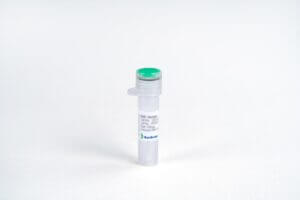
IHH, Human
$1,177.31 Add to cart View Product DetailsThe Indian Hedgehog protein (IHH) is one of three proteins in the mammalian hedgehog family, the others being desert hedgehog (DHH) and Sonic hedgehog (SHH). Hedgehog proteins are important signaling molecules during embryonic development and are highly conserved across species. Mouse and human IHH share 100% amino acid identity in the signaling domain, while mouse IHH and SHH share 90% amino acid identity in the N-terminal signaling domain. IHH mRNA expression is detected in fetal lung, gut, stomach, liver, kidney, pancreas and strongly in cartilage in growth regions of the developing bone. IHH has a specific role in bone growth and differentiation. In addition, IHH is involved in yolk sac vasculogenesis, having a central role in differentiation of epiblast cells into endothelial and red blood cells. IHH gene mutations cause the brachydactyly type A1 which is characterized by shortening or malformation of the phalanges and also the acrocapitofemoral dysplasia.
-

IHH, Human
$68.14 Add to cart View Product DetailsThe Indian Hedgehog protein (IHH) is one of three proteins in the mammalian hedgehog family, the others being desert hedgehog (DHH) and Sonic hedgehog (SHH). Hedgehog proteins are important signaling molecules during embryonic development and are highly conserved across species. Mouse and human IHH share 100% amino acid identity in the signaling domain, while mouse IHH and SHH share 90% amino acid identity in the N-terminal signaling domain. IHH mRNA expression is detected in fetal lung, gut, stomach, liver, kidney, pancreas and strongly in cartilage in growth regions of the developing bone. IHH has a specific role in bone growth and differentiation. In addition, IHH is involved in yolk sac vasculogenesis, having a central role in differentiation of epiblast cells into endothelial and red blood cells. IHH gene mutations cause the brachydactyly type A1 which is characterized by shortening or malformation of the phalanges and also the acrocapitofemoral dysplasia.
-

IHH, Human
$155.25 Add to cart View Product DetailsThe Indian Hedgehog protein (IHH) is one of three proteins in the mammalian hedgehog family, the others being desert hedgehog (DHH) and Sonic hedgehog (SHH). Hedgehog proteins are important signaling molecules during embryonic development and are highly conserved across species. Mouse and human IHH share 100% amino acid identity in the signaling domain, while mouse IHH and SHH share 90% amino acid identity in the N-terminal signaling domain. IHH mRNA expression is detected in fetal lung, gut, stomach, liver, kidney, pancreas and strongly in cartilage in growth regions of the developing bone. IHH has a specific role in bone growth and differentiation. In addition, IHH is involved in yolk sac vasculogenesis, having a central role in differentiation of epiblast cells into endothelial and red blood cells. IHH gene mutations cause the brachydactyly type A1 which is characterized by shortening or malformation of the phalanges and also the acrocapitofemoral dysplasia.
-

IL-1 RA, Human(HEK 293-expressed)
$737.44 Add to cart View Product DetailsIL-1 Receptor Antagonist, also known as IL-1RA, ICIL-1RA, IRAP and IL-1RN, is a member of the interleukin 1 cytokine family. It is expressed by monocytes, neutrophils, macrophages, epithelial cells and fibroblasts. IL-1RA inhibits the activity of both IL-1alpha and IL-1beta, and modulates a variety of IL-1 related immune and inflammatory responses. It inhibits the activity of IL-1 by binding to the receptor IL-1R1 and preventing its association with the coreceptor IL-1RAP for signaling. Clinical studies are being conducted to investigate the use of IL-1RA in the treatment of sepsis, rheumatoid arthritis and chronic myelogenous leukemia.
-

IL-1 RA, Human(HEK 293-expressed)
$43.13 Add to cart View Product DetailsIL-1 Receptor Antagonist, also known as IL-1RA, ICIL-1RA, IRAP and IL-1RN, is a member of the interleukin 1 cytokine family. It is expressed by monocytes, neutrophils, macrophages, epithelial cells and fibroblasts. IL-1RA inhibits the activity of both IL-1alpha and IL-1beta, and modulates a variety of IL-1 related immune and inflammatory responses. It inhibits the activity of IL-1 by binding to the receptor IL-1R1 and preventing its association with the coreceptor IL-1RAP for signaling. Clinical studies are being conducted to investigate the use of IL-1RA in the treatment of sepsis, rheumatoid arthritis and chronic myelogenous leukemia.
-

IL-1 RA, Human(HEK 293-expressed)
$76.76 Add to cart View Product DetailsIL-1 Receptor Antagonist, also known as IL-1RA, ICIL-1RA, IRAP and IL-1RN, is a member of the interleukin 1 cytokine family. It is expressed by monocytes, neutrophils, macrophages, epithelial cells and fibroblasts. IL-1RA inhibits the activity of both IL-1alpha and IL-1beta, and modulates a variety of IL-1 related immune and inflammatory responses. It inhibits the activity of IL-1 by binding to the receptor IL-1R1 and preventing its association with the coreceptor IL-1RAP for signaling. Clinical studies are being conducted to investigate the use of IL-1RA in the treatment of sepsis, rheumatoid arthritis and chronic myelogenous leukemia.
-

IL-10, Human(CHO-expressed)
$2,018.25 Add to cart View Product DetailsInterleukin-10 (IL-10), initially known as Cytokine Synthesis Inhibitory Factor (CSIF), belongs to the IL-10 family and shares more than 80% sequence homology with Epstein-Barr Virus protein BCRFI. It is produced by many immune cells, such as T-cells, macrophages, mast cells, and dendritic cells. It is usually secreted as a homodimer and, upon binding to its receptor, inhibits the synthesis of a number of cytokines, including IFN-gamma, IL-2, IL-3, TNF and GM-CSF produced by activated macrophages and Th2 cells. It also displays ability to suppress Antigen-Presenting Cell (APC) function. The net effect of Interleukin-10 appears to be inhibitory; however, stimulatory effects, such as stimulation of B cell maturation and antibody production, are also reported.
-

IL-10, Human(CHO-expressed)
$86.25 Add to cart View Product DetailsInterleukin-10 (IL-10), initially known as Cytokine Synthesis Inhibitory Factor (CSIF), belongs to the IL-10 family and shares more than 80% sequence homology with Epstein-Barr Virus protein BCRFI. It is produced by many immune cells, such as T-cells, macrophages, mast cells, and dendritic cells. It is usually secreted as a homodimer and, upon binding to its receptor, inhibits the synthesis of a number of cytokines, including IFN-gamma, IL-2, IL-3, TNF and GM-CSF produced by activated macrophages and Th2 cells. It also displays ability to suppress Antigen-Presenting Cell (APC) function. The net effect of Interleukin-10 appears to be inhibitory; however, stimulatory effects, such as stimulation of B cell maturation and antibody production, are also reported.
-

IL-10, Human(CHO-expressed)
$271.69 Add to cart View Product DetailsInterleukin-10 (IL-10), initially known as Cytokine Synthesis Inhibitory Factor (CSIF), belongs to the IL-10 family and shares more than 80% sequence homology with Epstein-Barr Virus protein BCRFI. It is produced by many immune cells, such as T-cells, macrophages, mast cells, and dendritic cells. It is usually secreted as a homodimer and, upon binding to its receptor, inhibits the synthesis of a number of cytokines, including IFN-gamma, IL-2, IL-3, TNF and GM-CSF produced by activated macrophages and Th2 cells. It also displays ability to suppress Antigen-Presenting Cell (APC) function. The net effect of Interleukin-10 appears to be inhibitory; however, stimulatory effects, such as stimulation of B cell maturation and antibody production, are also reported.
-

IL-10, Mouse(CHO-expressed)
$2,018.25 Add to cart View Product DetailsInterleukin-10 (IL-10), initially known as Cytokine Synthesis Inhibitory Factor (CSIF), belongs to the IL-10 family and shares more than 80% sequence homology with the Epstein-Barr Virus protein BCRFI. It is produced by many immune cells, such as T-cells, macrophages, mast cells and dendritic cells. It is usually secreted as a homodimer and, upon binding to its receptor, inhibits the synthesis of a number of cytokines, including IFN-gamma, IL-2, IL-3, TNF and GM-CSF, by activated macrophages and Th2 cells. It also displays the ability to suppress Antigen-Presenting Cell (APC) function. The net effect of Interleukin-10 appears to be inhibitory; however, stimulatory effects, such as stimulation of B cell maturation and antibody production, are also reported.
-

IL-10, Mouse(CHO-expressed)
$86.25 Add to cart View Product DetailsInterleukin-10 (IL-10), initially known as Cytokine Synthesis Inhibitory Factor (CSIF), belongs to the IL-10 family and shares more than 80% sequence homology with the Epstein-Barr Virus protein BCRFI. It is produced by many immune cells, such as T-cells, macrophages, mast cells and dendritic cells. It is usually secreted as a homodimer and, upon binding to its receptor, inhibits the synthesis of a number of cytokines, including IFN-gamma, IL-2, IL-3, TNF and GM-CSF, by activated macrophages and Th2 cells. It also displays the ability to suppress Antigen-Presenting Cell (APC) function. The net effect of Interleukin-10 appears to be inhibitory; however, stimulatory effects, such as stimulation of B cell maturation and antibody production, are also reported.
-

IL-10, Mouse(CHO-expressed)
$271.69 Add to cart View Product DetailsInterleukin-10 (IL-10), initially known as Cytokine Synthesis Inhibitory Factor (CSIF), belongs to the IL-10 family and shares more than 80% sequence homology with the Epstein-Barr Virus protein BCRFI. It is produced by many immune cells, such as T-cells, macrophages, mast cells and dendritic cells. It is usually secreted as a homodimer and, upon binding to its receptor, inhibits the synthesis of a number of cytokines, including IFN-gamma, IL-2, IL-3, TNF and GM-CSF, by activated macrophages and Th2 cells. It also displays the ability to suppress Antigen-Presenting Cell (APC) function. The net effect of Interleukin-10 appears to be inhibitory; however, stimulatory effects, such as stimulation of B cell maturation and antibody production, are also reported.
